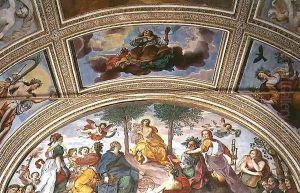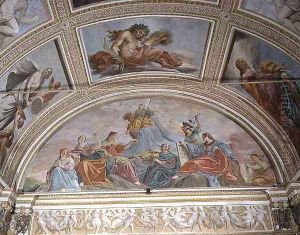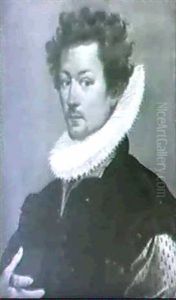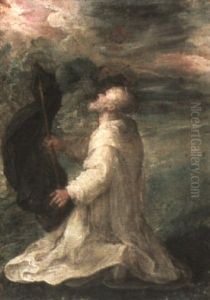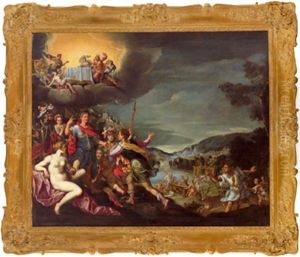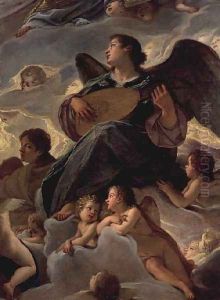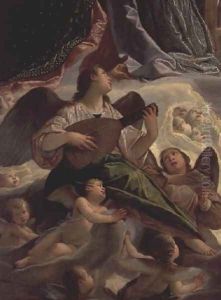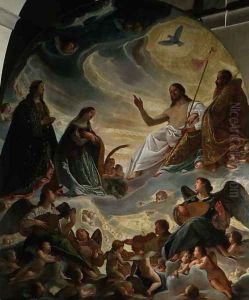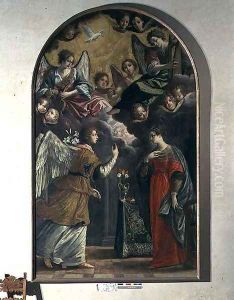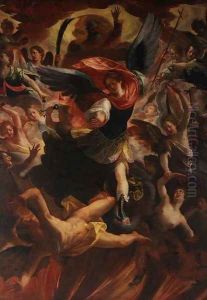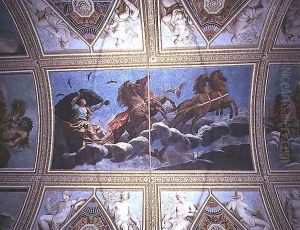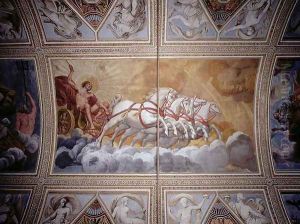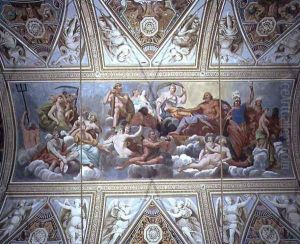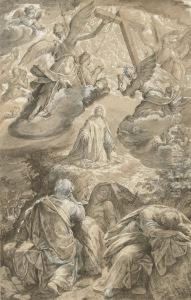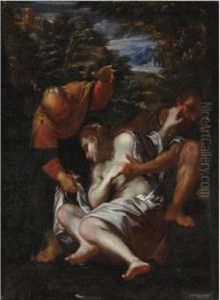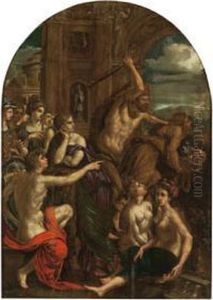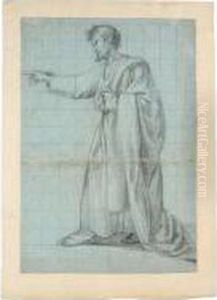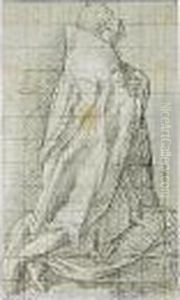Antonio Maria Viani Paintings
Antonio Maria Viani, an Italian painter of the late Renaissance period, was born in 1540 in Cremona, a city in the Lombardy region known for its artistic vigor during the Renaissance. Viani's early life is somewhat obscure, but it is believed that he initially trained in Cremona, absorbing the rich artistic traditions of Northern Italy before moving to Mantua to further his career.
In Mantua, Viani became associated with the court of the Gonzaga family, one of the most prominent patrons of the arts in Italy during the 16th century. This connection significantly shaped his career and artistic development. He was heavily influenced by the Mannerist style, which was prevalent among the Gonzaga court artists. This style is characterized by its artificial elegance, elongated forms, and often complex compositions, departing from the naturalism and harmony that marked the High Renaissance.
Viani's work for the Gonzaga family included frescoes, portraits, and religious paintings. One of his most notable contributions was his work in the Ducal Palace of Mantua, where his frescoes are remembered for their vibrant colors and intricate detail. These works reflect the opulence and refined taste of the Gonzaga court, as well as the artistic trends that dominated Italian art during the late 16th and early 17th centuries.
Despite his success, Viani's name is not as widely recognized today as some of his contemporaries, such as Titian or Caravaggio. This can be attributed to the regional nature of his work and the fact that much of it remains in situ in Mantua, less accessible to the broader public. However, his contributions to the Mannerist movement and his role in the cultural life of the Gonzaga court are undeniable.
Antonio Maria Viani passed away in 1629 in Mantua. His legacy is preserved in the city's architecture and art collections, serving as a testament to the vibrant cultural atmosphere of Renaissance Italy and the enduring appeal of Mannerist art.
